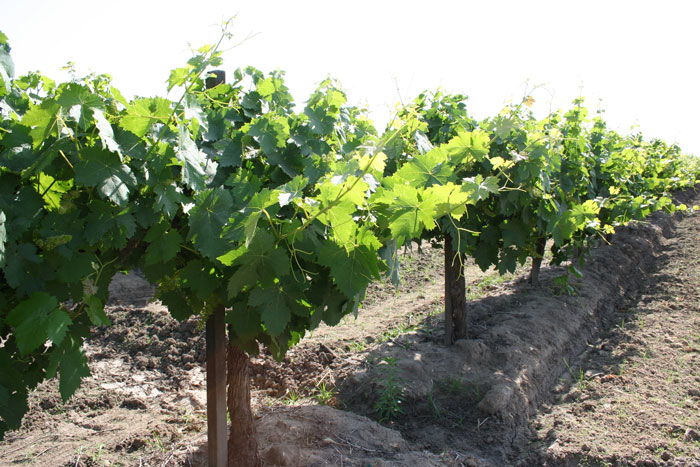
A closer look at a long-term disease threat to vineyards
Commonly, leafroll can lower yields by 10 to 20 percent. Because the disease damages the phloem of infected vines, it delays sugar accumulation and reduces anthocyanin production. This results in fruit that is low in sugar, poorly colored and late in ripening.

Of the more than 55 virus and virus-like diseases that grape vines harbor, one that has been of increasing concern to California growers – especially those in the Napa Valley and Central Coast regions – is leafroll disease.
This disease is found in every major viticulture region in the world. Typically, loss from leafroll in any one year isn’t catastrophic. However, plants remain infected for life. Consequently, over time, the accumulated costs in reduced grape yield and quality can be substantial, report University of California Cooperative Extension specialists.
Commonly, leafroll can lower yields by 10 to 20 percent. Because the disease damages the phloem of infected vines, it delays sugar accumulation and reduces anthocyanin production. This results in fruit that is low in sugar, poorly colored and late in ripening. In some varieties, fruit maturity is delayed to the extent that fruit on an affected vine may be pale or even whitish at harvest when fruit on a healthy vine is ripe.
Currently, nine unique, closely related viruses are associated with leafroll disease. The non-native vine mealybug is considered the new and increasingly important vector of this virus in California. However, it can also be spread by the other mealybugs that feed on grapevines in California – grape, obscure, longtailed, citrus and Gill’s mealybug – as well as soft scale.
Leaf and fruit symptoms can be used to diagnose leafroll disease in many varieties of V. vinifera grapevines. However, symptoms are not reliable indicators of leafroll disease in most North American species and hybrids, including most rootstock varieties, note the Extension specialists. The lack of symptoms in any type of grapevine does not guarantee freedom from infection by the viruses which cause the disease.
Visual symptoms develop in both leaves and fruit of most vinifera varieties as the crop matures. The most distinct leaf symptoms appear between the time of harvest and leaf fall. On affected vines, the margins of the leaf blades roll downward, starting with the basal leaf on the cane. Areas between the major veins turn yellow or red, depending on whether the variety produces white- or red-colored fruit. In some varieties, the area adjacent to the major veins remains green until late fall.
The most successful approach to controlling leafroll disease in grapevines has been the use of virus-free grapevine nursery stock -- root or scion – produced through the California Grapevine Registration and Certification Program, a program administered by the California Department of Food and Agriculture.
More details, including a photo of leaves showing symptoms of leafroll disease and sources of information about the disease, are available at http://iv.ucdavis.edu/Viticultural
About the Author(s)
You May Also Like



